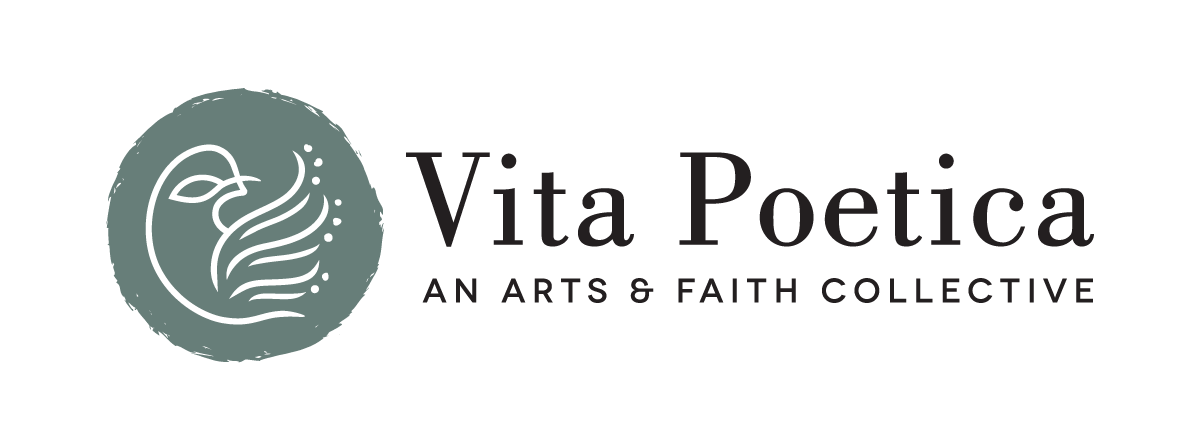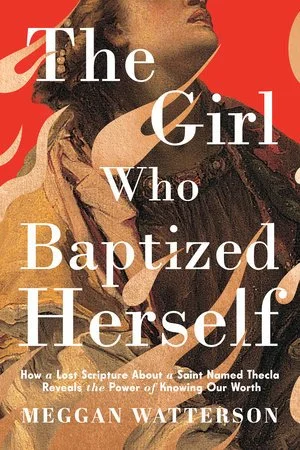A Review of Meggan Watterson’s The Girl Who Baptized Herself: How a Lost Scripture About a Saint Named Thecla Reveals the Power of Knowing Our Worth (Random House, 2025)
by Shirley Paulson
288 pp., hardcover, $31
July 22, 2025
Random House
ISBN: 9780593595008
In her book, The Girl Who Baptized Herself, Meggan Watterson intertwines her own personal journey with the ancient story of Thecla, a figure whose life embodies defiance against the oppressive, patriarchal Roman system she lived under. Half autobiographical and half analysis of ancient Christian thinking, The Girl Who Baptized Herself projects Watterson’s own “sacred rage” in parallel with the telling of Thecla’s story.
Watterson’s exploration is deeply feminist, presenting both her life and Thecla’s through a lens that questions religious traditions that limit women’s agency. While Thecla, who faced life-threatening trials such as public execution by fire and combat with wild animals in the public arena, Watterson’s battles were subtler but no less significant. Raised in a form of Christianity that maintains more muted, but restrictive, views toward women, she confronted the denial of women’s rights “to see, to know, to act on [their] own power, [their] own choices.”
One critical moment for Watterson came while working at a Catholic charity for young mothers. Tasked with caring for the children of so-called “prostitutes,” she soon realized these were not mere sex workers but trafficked girls as young as fourteen—close in age to Thecla. Watterson protested, “there is no such thing as a 14-year-old prostitute!” Her fierce love for these girls became a catalyst for her spiritual journey. Determined to find empowering Christian stories for them, she entered seminary, even knowing she would never be ordained. Her mission was to uncover ancient narratives that affirmed the value of women.
Remarkably, she found these stories, and came to realize how the very powers denying the inherent worth of women also excluded women’s voices from in church-sanctioned scriptures. Thecla’s story, preserved in The Acts of Paul and Thecla, was never really lost, but it was marginalized and discredited as either too heretical or so highly fictionalized to be considered useful.
But when Watterson began to study the long-buried stories of female empowerment within the writings preserved at Nag Hammadi and Oxyrhynchus, Egypt, she found a usable version of Thecla’s story among these liberating works. Discovered in the late nineteenth and early twentieth centuries, these ancient texts offer a radically different view of early Christianity, one centered on hope and encouragement for everyone. They convey a Christianity of compassion and equality rather than patriarchal dominance. While Thecla’s story serves as the main template for Watterson’s discovery of her own worth and freedom, the author also pays close attention to other early Christian texts that reimagine Mary Magdalene as a strong, compassionate, and spiritually wise leader. Similarly, Thunder, Perfect Mind—another text from the Nag Hammadi collection with a prominently feminine voice—celebrates the realities of lived womanhood: “I am she who is disgraced and she who is important.”
Ironically, even the title of the ancient book, The Acts of Paul and Thecla, hints at the patriarchal attitudes to which Watterson objects. Paul, of course, was far more famous and was later considered one of the most important authorities representing proto-Orthodox Christianity. But after his preaching grabs Thecla’s full attention at the beginning of the narrative, Paul is only a minor character in the rest of Thecla’s story. Furthermore, he refuses to baptize her at her request and even abandons her during her most severe trials. The Acts of Thecla thus might have been a more descriptive title.
With each of Thecla’s trials and triumphs, Watterson discerns valuable guidance in the dangerous path from obsequious compliance with Roman domination to her full assurance of self-worth and freedom. In Thecla’s most memorable act—her self-baptism in a pit of dangerous waters in a Roman arena—Watterson is inspired to consider her own possibilities. As wild sea creatures surrounded Thecla, she boldly baptized herself, an act symbolizing both spiritual freedom and defiance of patriarchal control. This moment is a death, but not one of despair. Watterson sees Thecla dying to oppressive social norms and being reborn into a life of divine love. Divine intervention saved Thecla from the sea creatures, however, revealing her spiritual strength. Watterson’s personal reflections on her own experiences—being told how to behave, how to dress, and how to be “nice”—resonate with the struggles of women throughout history. Like Thecla, she learned to reject these imposed narratives. Her decision to baptize herself just as Thecla did—whispering, “In the name of Jesus Christ, I baptize myself”—becomes Watterson’s own moment of spiritual liberation.
This theme of rising up against oppression inspires Watterson’s recognition of relevance through a variety of modern figures and movements, from George Floyd’s fight for justice to Mahsa Amini’s tragic death at the hands of Iran’s Guidance Patrol in 2022. Such stories evoke what Watterson calls “sacred rage,” an anger born from witnessing the suffering of the powerless.
Readers may question Watterson’s interpretive liberties with Thecla’s story. Her retelling is not a strict literary analysis but a personal reclamation of an empowering narrative. Yet, this approach is its strength. Watterson does not merely study Thecla; she embodies her spirit, transforming an ancient text into a source of modern inspiration.
Ultimately, The Girl Who Baptized Herself is more than a retelling of an ancient Christian tale. It is a passionate exploration of spiritual defiance, a tribute to those who resist being silenced, and an invitation for readers—especially women—to reclaim their voices and spiritual identities.
Shirley Paulson is the principal producer of the Early Christian Texts website, earlychristiantexts.com, which features the “Bible and Beyond” series of blog posts, articles, online courses, events, discussions, and a monthly podcast. Shirley’s academic work focuses on early Christian texts, especially those relating to healing practices and theology. She is currently working on a book on The Secret Revelation of John. She has served as the first Head of Ecumenical Affairs for the global headquarters of the Christian Science Church and on the Board of the North American Academy of Ecumenists.

